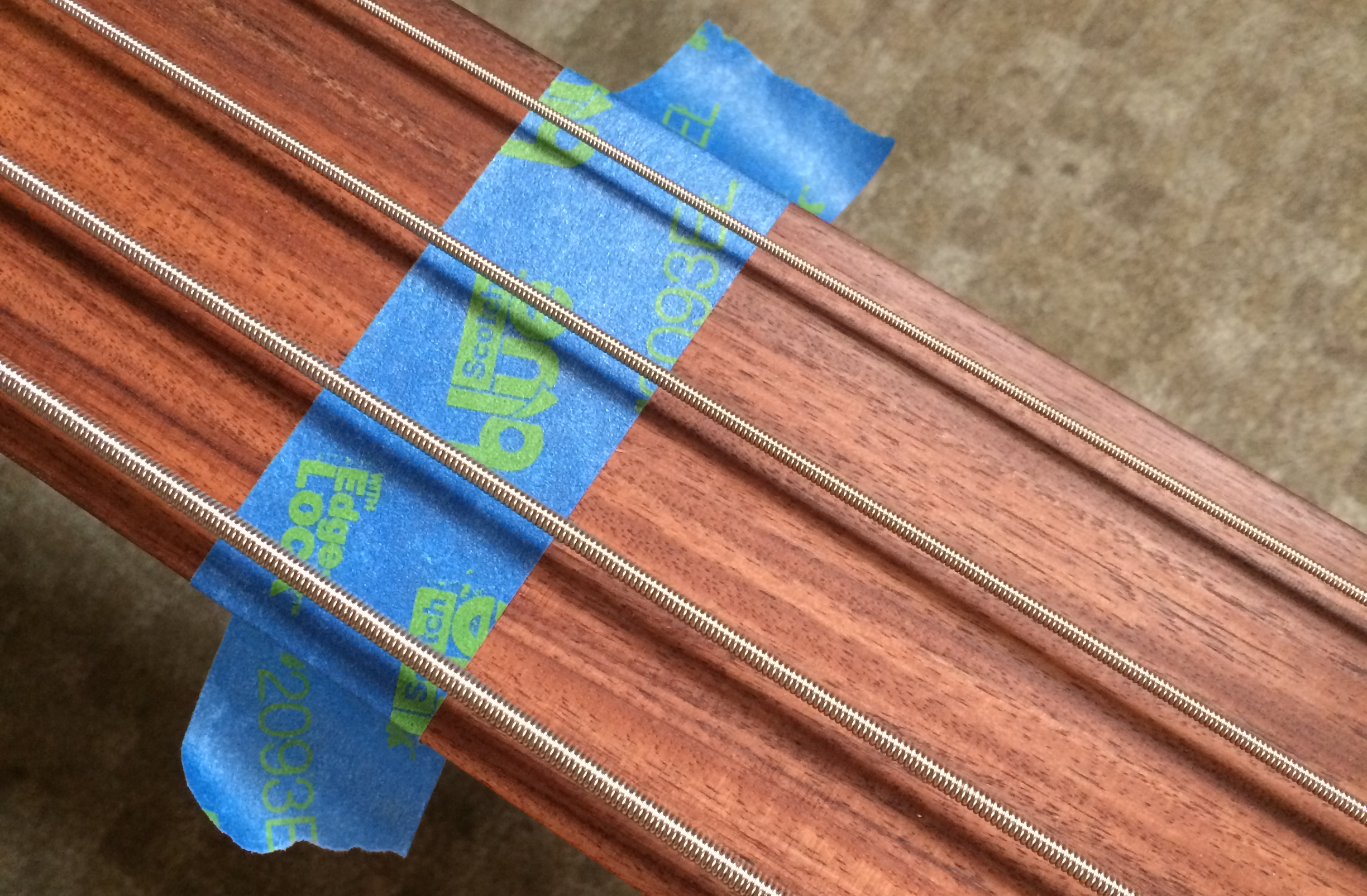Setting Intonation on a Fretless
We won't get too far into the whys and hows of intonation right now but, you'll probably all know that your guitar or bass should be 'intonated' to ensure that each string plays closely in tune in all positions on the neck.
Generally, this is done by ensuring the note played at the 12th fret position is properly in tune with the open string (which is the same note, an octave lower). If the fretted note is sharp or flat, we adjust the bridge saddles back or forward (respectively) to compensate and properly intonate the string.
We pick the 12th fret because it marks half of the instrument's scale-length (the 'sounding' part of the string from nut to bridge saddle).
What if there's no 12th fret?
On a fretless instrument, we have no fret to mark the exact octave position. While a good fretless player could probably automatically correct for a slight variation in intonation, I don't think he or she should have to.
So, when I'm setting intonation on a fretless, to make sure I know the exact 12th fret position, I measure. To do this, you just need to halve the scale-length. In this case, we have a 34" scale bass so our 12th fee position would sit exactly 17 inches from the 'near side' of the nut. Find that position and pop on a piece of masking tape to mark it. If you stick the tape to your shirt first, it will remove much of its tackiness and it'll be less likely to leave gum behind or pull finish away.
Now you've got a perfect marker for setting intonation and the bassist has no excuse for poor fingering. ;-)

